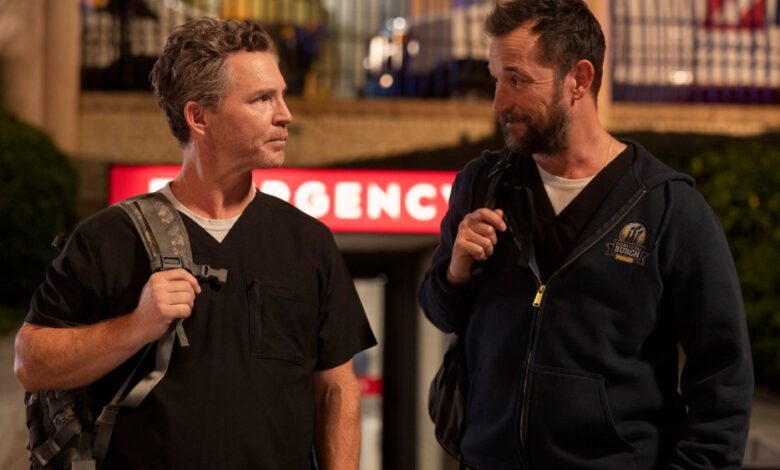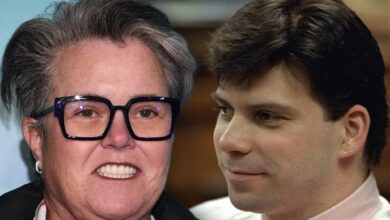Noah Wyle on Season 1 Ending and Season 2 Plans

The Season 1 finale of “The Pitt” left viewers on the edge of their seats with a whirlwind of intense medical emergencies and personal struggles. As the day shift at the Pittsburgh Trauma Medical Center’s emergency department comes to a close, the staff has faced an overwhelming array of challenges, from fentanyl overdoses to mass shootings. The exhaustion is palpable as they hand off their patients to the night shift.
Despite the chaos, there are moments of hope and redemption. Dr. Robby successfully intervenes on behalf of Dr. Cassie McKay, Dr. Mel ensures proper treatment for a patient with measles, and Dr. Trinity reaches out to a suicidal patient. These small victories provide a glimmer of light in the darkness that has consumed the day.
However, not everyone emerges unscathed. Charge nurse Dana decides to leave her job after a traumatic encounter, and Dr. Langdon faces consequences for his actions. Tensions run high as Robby confronts Langdon about his drug use, leading to a heated exchange that exposes the cracks in their relationships.
The emotional toll of the day’s events weighs heavily on Robby, who grapples with his past trauma and the challenges of his job. A poignant moment on the rooftop with Dr. Abbot offers a glimpse into Robby’s inner turmoil and the struggle to find meaning in the chaos of the ER.
As the day draws to a close, the staff gathers outside the hospital to reflect on the events of the shift. Beers are cracked open, laughter fills the air, and a sense of camaraderie emerges amidst the chaos. It’s a moment of respite in the storm, a chance to find solace in each other’s company and celebrate the lives they’ve saved.
Looking ahead to Season 2, the show’s creators promise a time jump that will see the characters facing new challenges and embarking on personal journeys of growth and healing. With Robby’s recovery from PTSD at the forefront, viewers can expect a deeper exploration of the toll that working in the ER takes on its staff.
As “The Pitt” moves forward, it continues to captivate audiences with its raw depiction of life in a high-stakes medical environment. The Season 1 finale sets the stage for a compelling second season, filled with drama, heartache, and moments of triumph. They also discussed the possibility of Dana and Langdon’s return, how much “The Pitt” will reflect the current turmoil in the world of health care, and what motivated the season finale revelations about Abbot and Whitaker.
R. Scott Gemmill and John Wells recently shed some light on the final two episodes of the season, which took a different approach compared to the intense mass casualty event in Episodes 12 and 13. Gemmill explained that they initially considered ending the season at Episode 12 due to its powerful impact, but ultimately decided to explore the aftermath and how the characters dealt with the tragedy.
The decision to structure the episodes in this way came after much deliberation and moving things around. Gemmill and Wells wanted to be honest in portraying the aftermath of such a traumatic event, drawing inspiration from real-life events like the Las Vegas shooting. They spoke to doctors and nurses who had experienced similar tragedies to ensure authenticity in their storytelling.
Wells emphasized the importance of portraying the handoff period in emergency rooms, where physicians must transition from one case to another amidst the chaos. The average ER physician sees a patient every three to four minutes, creating a high-pressure environment that requires a thoughtful approach to winding down after such intense situations.
One of the memorable scenes in the finale was when the characters drank beers in a park in Pittsburgh, highlighting the reality of decompressing after a long shift in the ER. Gemmill revealed that the scene was shot across from Allegheny General Hospital, adding a touch of authenticity to the setting.
The season finale also featured some surprising revelations, such as Dr. Abbot having a prosthetic leg. Gemmill and Wells explained that this plot twist was planned from the beginning, with the intention of showcasing a character with a disability that does not limit him. The reveal was meant to be a subtle surprise rather than a shocking twist.
Additionally, the revelation about Whitaker squatting in the unoccupied wing of the hospital was a deliberate choice to highlight the financial struggles that many medical professionals face after graduating. Gemmill explained that the burden of student loans and the reality of unused hospital wings added a layer of authenticity to the character’s storyline.
Overall, Gemmill and Wells’s thoughtful approach to storytelling and attention to detail in portraying the aftermath of trauma and the challenges faced by medical professionals added depth and realism to the season finale of “The Pitt”. Their commitment to authenticity and honesty in storytelling resonated with audiences and showcased the complexities of the healthcare world. The current state of the ER in the hospital is not just impacted by the fact that Dr. Langdon is living in the unused wing, but also by the lack of available beds that could be utilized if that wing was operational. This situation is a result of a complex web of issues that are all interconnected.
Medical students, particularly in the early days of their residency, often resort to couch-surfing due to inadequate pay. Dr. Whitaker, for example, wouldn’t have received a paycheck until Season 2 when he becomes an intern, and even then, it’s not a substantial amount. This financial strain on medical professionals is a reality that contributes to the challenges faced in the healthcare system.
As the show progresses into Season 2, the creators are contemplating a time jump to keep the storyline fresh and engaging. By shifting the timeline by about nine months, the characters will have evolved, and new challenges and developments can be explored. This shift also allows for the possibility of Dr. Langdon returning after undergoing rehab as part of his recovery process.
The real-time format of the show has been a successful element that the creators intend to maintain. It allows for a unique storytelling experience and keeps the audience engaged with the fast-paced nature of the medical world. Additionally, the show aims to reflect real-life issues such as the dismantling of the public health system, although the creators are cautious about being too specific in a contemporary context.
Looking ahead, Dr. Robby’s character arc is set to undergo significant development as he grapples with his own personal struggles. After a breakdown in the first season, he will be forced to confront his issues and seek help. His journey towards self-acceptance and recovery will be a central theme in the upcoming episodes, highlighting the internal conflicts and challenges faced by healthcare professionals.
In conclusion, “The Pitt” continues to explore the complexities of the healthcare system through compelling storytelling and character development. By addressing relevant issues and delving into the personal lives of medical professionals, the show offers a unique perspective on the challenges faced in the ER. As the narrative unfolds, viewers can expect to be immersed in a world where medical drama and personal struggles intersect, creating a captivating and thought-provoking viewing experience.
Exploring the Depths of Medical Drama in Season 2
As the highly anticipated Season 2 of the medical drama unfolds, viewers can expect a deep dive into the complexities of the modern healthcare system. With a team of expert advisors guiding the storyline, the show aims to shed light on the pressing issues facing the medical community today.
A Glimpse into the Future of Healthcare
The writers of the show have a knack for tapping into the zeitgeist, exploring topics that are eerily relevant to current events. From brain worms to measles outbreaks, the series delves into the real-world challenges that healthcare professionals face on a daily basis.
Adapting to the Changing Landscape of Medicine
This season, the show’s creators have had to grapple with the impact of global health crises on the medical field. With the looming threat of funding cuts and resource shortages, the characters must navigate a healthcare system in turmoil, all while striving to provide the best possible care to their patients.
Expert advisors like Dr. Mel Herbert have provided invaluable insights into the challenges facing healthcare workers on the front lines. From the struggle to distribute life-saving vaccines to the heartbreaking reality of unused medical supplies, the series aims to shine a light on the harsh realities of the healthcare industry.
A Cast of Familiar Faces and New Challenges
While fan-favorite characters are set to return for Season 2, the show’s creators are also exploring new storylines and character developments. As the dynamics of the emergency department evolve, viewers can expect to see the familiar faces of their favorite doctors and nurses grappling with new challenges and moral dilemmas.
The Future of the Emergency Department
While the idea of a night shift has been floated as a potential storyline, the show’s creators are hesitant to shake up the format that has been working so well. With a focus on maintaining the integrity of the series, the writers are committed to delivering a compelling and authentic portrayal of life in the emergency department.
As Season 2 unfolds, viewers can expect to be taken on a rollercoaster ride through the highs and lows of the medical profession. With a blend of drama, suspense, and heart-wrenching moments, the series promises to be a captivating exploration of the complexities of modern healthcare.
Welcome to our discussion about potential changes for future seasons of our show. In our previous conversations, we touched upon some suggestions that we may consider implementing in Season 3 or Season 4.
So your suggestions were about altering the structure of the show?
Yes, one idea was to dedicate the first hour of an episode to showcasing how each character commutes to work. It could add an interesting layer to the storytelling.
Watching the first season, I did wonder if one of the episodes would stay with just one patient’s experience for the whole hour.
While the idea of focusing on a single patient for an entire episode may be tempting, we believe that our current format works well. It’s important to maintain our storytelling style without veering into gimmicks.
Because you’re looking at setting it in July, were you thinking you might set it over the July 4th holiday?
Setting an episode over the July 4th holiday could be a fun and engaging idea. We appreciate the suggestion and may consider incorporating it into our future seasons.
Both interviews have been edited and condensed.





